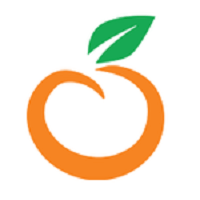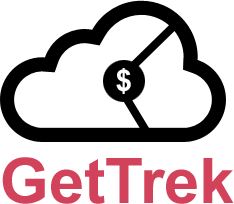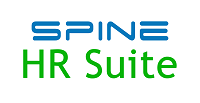Description

PayFocus

GCPAY
Comprehensive Overview: PayFocus vs GCPAY
PayFocus and GCPay are two distinct software solutions, each catering to different needs within the business and construction sectors, respectively. Below is a comprehensive overview of their primary functions, target markets, market share, user base, and key differentiating factors.
PayFocus
a) Primary Functions and Target Markets
-
Primary Functions:
- PayFocus is primarily a cloud-based payroll and human resources (HR) management software designed to simplify and automate the payroll and HR processes for businesses. It typically includes features such as employee self-service portals, tax compliance, direct deposit, payroll processing, benefits administration, and reporting capabilities.
-
Target Markets:
- PayFocus mainly targets small to medium-sized businesses (SMBs) that require a streamlined payroll and HR management solution. It appeals to businesses looking for an efficient, easy-to-use software to manage their payroll operations with minimal complexity.
b) Market Share and User Base
-
As a product often utilized by SMBs, PayFocus competes in a crowded market with numerous similar offerings, like Gusto, ADP, and Paychex. While specific market share data for PayFocus may not be readily available, it is generally considered a niche player compared to these larger competitors.
-
User Base:
- The user base for PayFocus is primarily composed of small to medium-sized enterprises across various industries within the United States, aligning with its focus on offering a simplified payroll solution.
c) Key Differentiating Factors
- PayFocus differentiates itself by offering an intuitive user interface, designed to reduce the complexity often associated with payroll processing for smaller businesses. It emphasizes user-friendliness and adaptability to the specific needs of SMBs.
GCPay
a) Primary Functions and Target Markets
-
Primary Functions:
- GCPay is a cloud-based platform that automates the payment application process in the construction industry. It manages tasks like lien waiver completion, compliance document management, billing workflows, and collaboration between general contractors and subcontractors.
-
Target Markets:
- GCPay targets the construction industry, specifically general contractors and subcontractors who need a streamlined and efficient solution to handle payment applications, agreements, and compliance documents.
b) Market Share and User Base
-
GCPay operates in a more specialized market compared to general payroll software, focusing on the construction sector. It plays a crucial role for many construction firms looking for dedicated solutions that handle industry-specific operations.
-
User Base:
- It attracts a variety of users from construction companies seeking to enhance their payment approval processes and ensure compliance with industry standards.
c) Key Differentiating Factors
- GCPay differentiates itself through its focus on the construction industry's unique requirements, including features for handling complex contract requirements, lien waivers, and compliance tracking, all of which are critical for construction project management.
- Its integration capabilities with construction management software and accounting systems enhance its value proposition, setting it apart from more generic payment tools.
Conclusion
In summary, PayFocus and GCPay are tailored to different market needs: PayFocus serves SMBs with payroll and HR services, while GCPay caters to the construction industry by offering specialized payment application management tools. Their differentiation lies in their targeted functionalities with PayFocus emphasizing ease of use for payroll, and GCPay focusing on industry-specific payment and compliance needs in construction. Each has its own distinct user base, with PayFocus appealing to a broader range of small businesses and GCPay focusing on construction firms.
Contact Info

Year founded :
2012
+27 82 609 6720
Not Available
South Africa
http://www.linkedin.com/company/payfocus

Year founded :
Not Available
Not Available
Not Available
Not Available
Not Available
Feature Similarity Breakdown: PayFocus, GCPAY
When comparing PayFocus and GCPAY, it's useful to evaluate both the commonalities and distinctions in their features, user interfaces, and any unique offerings. However, please note that specifics can vary based on the versions and updates of software not available to me after October 2023.
a) Core Features in Common
-
Payroll Processing and Management:
- Both PayFocus and GCPAY offer payroll processing solutions to automate and simplify payroll tasks.
-
Time and Attendance Tracking:
- Each system provides functionality to track employee time and attendance, helping ensure accurate payroll calculations.
-
Compliance and Reporting:
- Compliance with tax regulations and offering robust reporting features for audits and organizational needs are standard features in both systems.
-
Integration Capabilities:
- These platforms can integrate with other HR and accounting systems, facilitating a seamless management process across departments.
-
User Support and Training:
- Access to customer support and user training resources to maximize the utility of the software is offered by both systems.
b) Comparison of User Interfaces
-
PayFocus:
- Typically designed with small to medium businesses in mind, PayFocus may offer a cleaner and more simplified UI, focusing on intuitive navigation and ease of use. Bright colors and a dashboard-centric approach can be a common theme, ensuring accessibility for users who are not as technically inclined.
-
GCPAY:
- Known for its focus on the construction industry, GCPAY’s user interface might be more tailored to project management, with specific tools for managing contracts and billing. The UI could reflect a more data-driven and detailed presentation, accommodating users who need precise control and oversight over financial transactions.
c) Unique Features
-
PayFocus:
- May offer specific support for small and medium-sized enterprises (SMEs) with additional tools for HR management beyond payroll, such as benefits management and employee self-service portals.
- Unique pricing structures or packages might appeal to budget-conscious organizations.
-
GCPAY:
- Specialized for the construction sector, GCPAY could provide unique features tailored to managing construction financing and billing processes, such as automated lien waivers and subcontractor management.
- It might also offer robust tools for managing AIA billing processes, which are crucial for construction projects, setting it apart from generic payroll solutions.
Overall, while both PayFocus and GCPAY provide essential payroll and financial management tools, PayFocus might cater more broadly with an emphasis on general HR capabilities, whereas GCPAY’s unique offerings are more aligned with the specific needs of the construction industry.
Features

Not Available

Not Available
Best Fit Use Cases: PayFocus, GCPAY
PayFocus Use Cases:
a) PayFocus:
- Business Types: PayFocus is a payroll processing solution best suited for small to medium-sized businesses (SMBs) across various industries. It is particularly advantageous for companies looking for a straightforward, user-friendly payroll management system without the need for extensive customizations or integrations.
- Project Types: PayFocus is ideal for projects where the company requires efficient payroll processing, including payroll tax filing, direct deposits, and employee self-service options. It is particularly beneficial for businesses that need to manage payrolls with precision but lack the resources or infrastructure for a larger, more complex system.
b) Use Cases:
- Simplified Payroll Management: Businesses looking for an easy-to-use platform to manage their employee payrolls efficiently.
- Compliance with Tax Regulations: Companies needing a solution to help ensure compliance with federal, state, and local payroll tax regulations.
- Integration Needs: Businesses that can operate within the confines of simpler integration capabilities and do not require robust third-party software connectivity.
GCPAY Use Cases:
b) GCPAY:
- Business Types: GCPAY is specifically designed for construction and subcontractor industries, making it ideal for general contractors, construction managers, and subcontractors involved in large-scale construction projects.
- Project Types: It is well-suited for projects requiring detailed payment management processes such as managing subcontractor pay applications and lien waivers in construction and large infrastructure projects.
b) Use Cases:
- Construction Payment Management: Ideal for construction firms needing an organized system for complex billing, pay applications, compliance documents, and lien releases.
- Streamlining Subcontractor Payments: Companies looking to enhance efficiency by automating manual processes associated with subcontractor payment approvals and documentations.
- Complex Project Requirements: Projects that have detailed compliance and documentation requirements, which need a more specialized solution for managing these intricacies.
Catering to Industry Verticals and Company Sizes:
-
PayFocus:
- Industry Verticals: Serves a broad range of industries such as retail, healthcare, professional services, and non-profits that need basic payroll functionalities without industry-specific complexities.
- Company Sizes: Best for small to medium-sized enterprises that are less than 500 employees, focusing on ease of use and faster implementation without needing extensive customization.
-
GCPAY:
- Industry Verticals: Focuses exclusively on the construction sector, including commercial, residential, and civil construction projects, offering specialized tools for the unique payment challenges in that space.
- Company Sizes: Typically used by larger construction companies and contractors/subcontractors who manage complex projects with a larger scale of subcontractor management. It's ideal for businesses that are looking to enhance their operational efficiency through automation and streamlined processes in handling numerous subcontractor interactions.
Both platforms tailor their services to fit the specific needs of different industries, ensuring that they provide maximum value by focusing on the unique challenges and requirements of their target market.
Pricing

Pricing Not Available

Pricing Not Available
Metrics History
Metrics History
Comparing teamSize across companies
Conclusion & Final Verdict: PayFocus vs GCPAY
When evaluating PayFocus and GCPAY, several factors such as features, pricing, ease of use, customer support, and specific business needs should be considered to determine which product offers the best overall value.
Conclusion and Final Verdict
a) Best Overall Value
Determining the best overall value between PayFocus and GCPAY depends largely on the specific needs of the user. PayFocus is generally positioned as a powerful tool for payroll management, offering comprehensive features for businesses looking for a robust payroll and HR management system. GCPAY, on the other hand, excels in payment applications and construction payment management, making it ideal for companies in the construction sector.
For businesses predominantly concerned with payroll and HR functions, PayFocus likely provides the best value. Conversely, for construction firms or those needing detailed subcontractor payment management, GCPAY is the clear top choice.
b) Pros and Cons
PayFocus:
Pros:
- Comprehensive payroll processing capabilities.
- User-friendly interface that simplifies payroll tasks.
- Integration with various HR functions, offering a seamless experience.
- Strong reporting and compliance features to assist with regulatory requirements.
Cons:
- Primarily focused on payroll, potentially requiring additional tools for other business processes.
- May not offer specialized tools for industries beyond HR and payroll.
GCPAY:
Pros:
- Designed specifically for the construction industry with features for managing payment applications and documentation.
- Facilitates communication and compliance between contractors and subcontractors.
- Streamlines billing processes and ensures timely payments.
- Offers robust tools for lien waiver management and compliance tracking.
Cons:
- Limited in scope to construction-related payment processes.
- May not provide comprehensive payroll or HR functionalities outside the scope of construction payments.
c) Recommendations for Users
If you are trying to decide between PayFocus and GCPAY, the primary consideration should be the nature of your business and your specific needs:
-
Choose PayFocus if your primary requirement is a comprehensive, easy-to-use payroll and HR management solution. It is suitable for a wide range of businesses that need efficient payroll services, tax compliance, and HR functionalities.
-
Choose GCPAY if you operate within the construction industry or require detailed management of payment applications and subcontractor billing. It provides specialized tools that cater to the unique challenges of construction financial management.
Ultimately, reviewing the specific features each product offers and aligning them with your business needs will guide you in making the most informed decision. Additionally, consider reaching out for demos or trials to better understand how each tool can integrate with your current systems and processes.
Add to compare
Add similar companies



